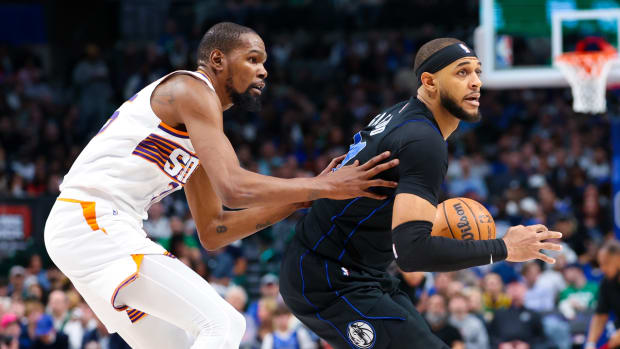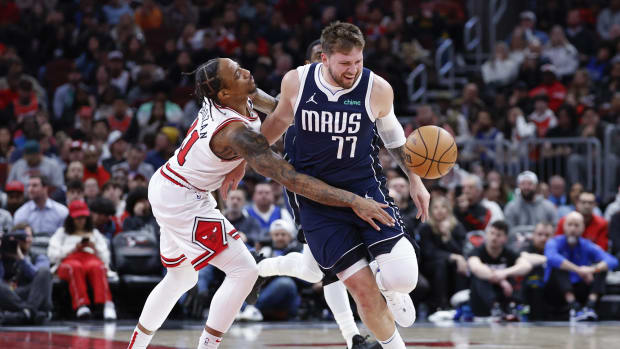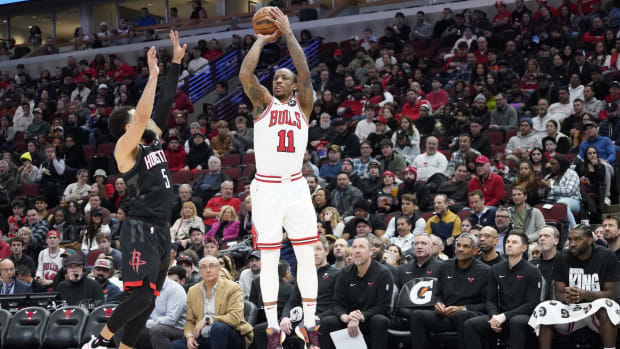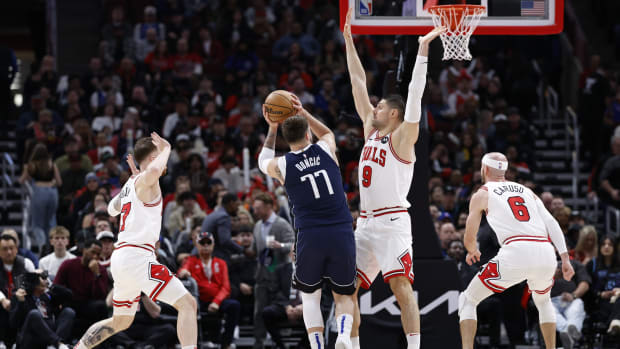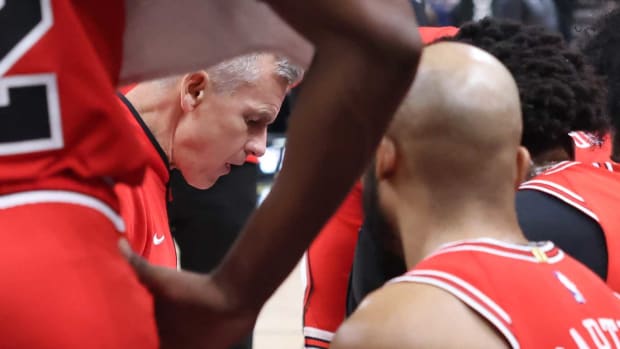How Tim Grover helped Michael Jordan get back into basketball shape in 1995
Michael Jordan's conditioning wasn't adequate when he made his surprising return to the NBA in 1995, but he still helped the Chicago Bulls go 13-4 in his first 17 games back. The team entered the playoffs as the fifth seed in the Eastern Conference and eliminated the Hornets in four games in the first round. In the second round, they faced Orlando, led by Shaquille O'Neal, Penny Hardaway, and Horace Grant. The Magic were too much for the Bulls and they lost the series in six games. MJ knew it was time to put in serious work with his trainer Tim Grover.
Jordan was away from the league for almost two years and it showed against the young and talented Magic. The lack of conditioning caught up with Jordan, and Tim Grover knew MJ would eventually feel the effects of coming back to the NBA without training for basketball for an extended period of time.
"The training for baseball is completely different than the training for basketball. The easiest way to give an example is when you play basketball there's a certain amount of arc that goes on a basketball shot to maximize the space on the rim. When you throw a baseball from right field you can't put an arc on the ball, it's got to be from point A to point B as fast as you can, so you have to retrain the whole shoulder muscle what movement it's going to do," Grover told GQ Sports.
"So the exercises we did for basketball were not applicable for baseball. The way you swing when you lead with your hips, completely different in baseball when you're swinging a bat than when you're stepping into a basketball shot," Grover added.
The road back to glory
When MJ retired in 1993, Grover, his sports enhancement specialist, predicted that the Bulls legend would eventually come back to the NBA. He even put together a workout to get Jordan ready just in case it would be necessary.
"During my off time between his retirement and when we started the baseball training I had already started to put a workout together inside to do my research and homework saying if he ever comes back what's gonna happen from a physiological standpoint what will we have to do in order to get him back," Grover explained. "I don't remember the day that they lost that game to Orlando I think it was a home game, we were the last ones in the arena, we're getting ready to leave out and I said Michael I'll see you, he goes 'I'll see you tomorrow' so that training process started right away," Grover continued.
MJ had a busy summer as he had to film Space Jam, but he was determined to be the best player in the NBA again and lead the Bulls to more championships.
Space Jam sessions
Michael knew he had to get his body ready, so he told Warner Bros. that he needed a place to work out and practice while filming. Warner Bros. suggested putting hoops and painting lines on a parking lot near the Space Jam set, but Jordan and Grover asked for better facilities, which led to the studio building the famous 'Jordan Dome.'
The state-of-the-art inflatable dome had a full basketball court, locker rooms with showers, a weight room, big screen TVs, a card table, and a putting green.
Jordan filmed Space Jam from Monday to Saturday from 7 am to 7 pm, with a two-hour break for mid-day exercises with Grover. He then played pickup games with Magic Johnson, Reggie Miller, Patrick Ewing, Dennis Rodman, Horace Grant, Juwan Howard, Eddie Jones, LaSalle Thompson, Jack Haley, Shawn Bradley, and the UCLA team that won the NCAA tournament in 1995, to name a few.
MJ gained eight pounds of muscle that summer. Then, he led the Bulls to a 72-10 record in the 1995-96 regular season and an NBA Championship. Jordan won the regular season, NBA All-Star game, and NBA Finals MVP awards in 1996, and Space Jam grossed over $250 million at the box office.


